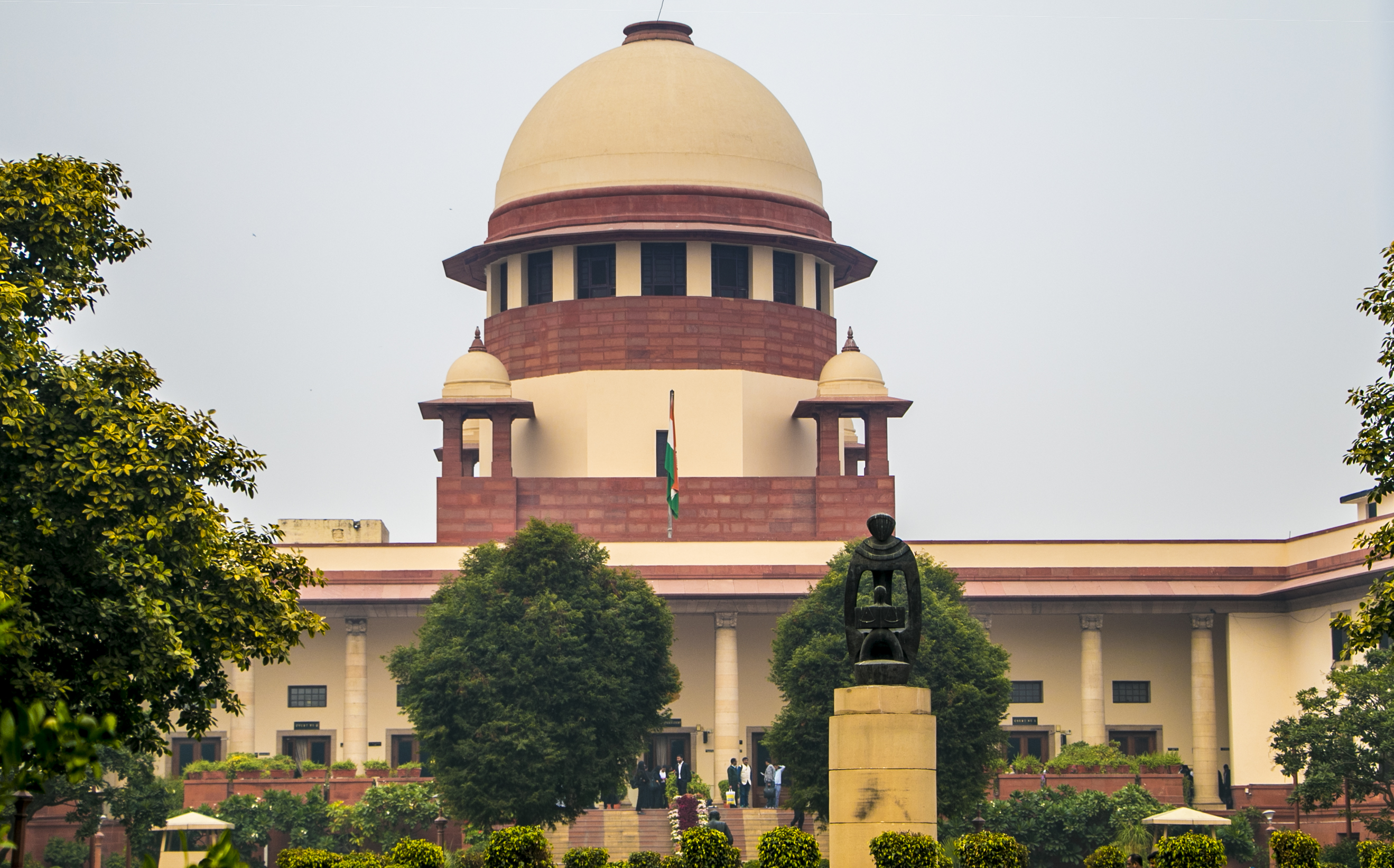Section 15 of Punjab Pre-emption Act, 1913, also provides right of pre-emption in respect of agricultural land & village immovable property, clarifies Supreme Court
Justices C.T. Ravikumar & Rajesh Bindal [06-02-2024]

Read Order: JAGMOHAN AND ANOTHER v. BADRI NATH AND OTHERS[SC- CIVIL APPEAL NO. 1753 OF 2024]
Tulip Kanth
New Delhi, February 7, 2024: While considering a matter pertaining to the Punjab Pre-emption Act, 1913, the Supreme Court has upheld a judgment of the Trial Court passing a decree in the favour of respondents in a 1984 civil suit filed for possession by pre-emption of a plot situated in Jagadhri city in Haryana.
This was a case wherein the respondents had filed a civil suit in the year1984 for measuring 719 square yards. The Trial Court (Additional Senior Sub Judge, Jagadhri) decreed the suit. The judgment and decree of the Trial Court was upheld upto the High Court of Punjab and Haryana.
The factual background was that the respondents (plaintiffs in the suit) claimed themselves to be the tenants in the property in dispute since 1949. The property in dispute was owned by Anarkali and others. The same was sold by the owners to the appellants (defendants in the suit) by way of a registered sale-deed. The respondents filed the suit exercising their right of pre-emption of the sale claiming that in terms of the provisions of the Punjab Pre-emption Act, 1913, they had preferential right to purchase the property. They offered to pay same sale consideration of Rs 43,000. The Trial Court decreed the suit subject to payment of Rs 50,238 to the vendee after deducting 1/5th of the pre-emption amount deposited in the Court at the time of filing of the suit. The amount so directed by the Trial Court was including stamp duty, registration fee and miscellaneous expenses incurred on registration of the sale-deed.
The appellants had put forth a case that in view of the notification 08.10.1985, issued by the State in exercise of powers under section 8(2) of the 1913 Act, the suit filed by the respondents deserved to be dismissed as the right of pre- emption did not exist for sale of land falling in the areas of any municipality in Haryana. It was further argued that the courts below had wrongly appreciated the issue regarding the custom of pre-emption prevailing in the area.
The respondents argued that though issue of limitation was raised by the appellants before the Trial Court, however, the same was not seriously contested for the reason that the suit filed by the respondents was within limitation. Referring to the Schedule attached to the Limitation Act, 1963 and Section 12, the Bench opined that the suit filed by the respondents was within limitation.
The right of the respondents/tenants in the property flows from Section 16 and the respondents were tenants in the property from the year 1949 onwards where the rolling mill had been set up. The Division Bench of Justice C.T. Ravikumar and Justice Rajesh Bindal observed that the term ‘urban immovable property’ has been defined in Section 3(3) of the 1913 Act to mean immovable property within the limits of town, other than agricultural land.
The term ‘land’ as defined in Section 2(3) excludes any site of any building in a town or village and this would mean that the immovable property would be more than the land only or the land on which the construction had already been made. It was also opined that the property in dispute is located in a municipal area of Jagadhri is not in dispute.
The Bench also came to the conclusion that the property in dispute on which right of pre-emption was sought to be exercised by the respondents was an urban immovable property. Another issue which required consideration was whether the exemption of pre-emption as granted vide notification dated 08.10.1985 would be available to the property in dispute. The 1985 notification provided that right of pre-emption would not exist in respect of sale of land falling in the areas of municipalities in Haryana.
“It is evident even from the language of Section 15 of the 1913 Act, which also provides right of pre-emption in respect of agricultural land and village immovable property. ‘Village immovable property’ has been defined to mean immovable property within the limits of a village other than the agricultural land”, the Bench opined while also adding, “From the aforesaid provisions of the 1913 Act, if read Scheme of the Act, it is abundantly clear that the land and the immovable property are two different terms. The immovable property is more than the land on which certain construction has been made.”
Noting that the 1985 notification limits its application for taking away the right of pre-emption only with reference to sale of land falling in the areas of any municipality, the Bench observed that the same would not come to the rescue of the appellants. Admittedly it was sale of immovable property, which was more than the land as a rolling mill had already been set up on the land, which was in occupation of the respondents as tenants.
As per the High Court, the issue regarding limitation for filing of the suit was also misconceived if considered in the light of the facts of the case, the provisions of the 1961 Act and also that the same was not raised by the appellants before the lower Appellate Court or the High Court. Thus, without finding any merit in the appeal, the same was dismissed.
Sign up for our weekly newsletter to stay up to date on our product, events featured blog, special offer and all of the exciting things that take place here at Legitquest.




Add a Comment